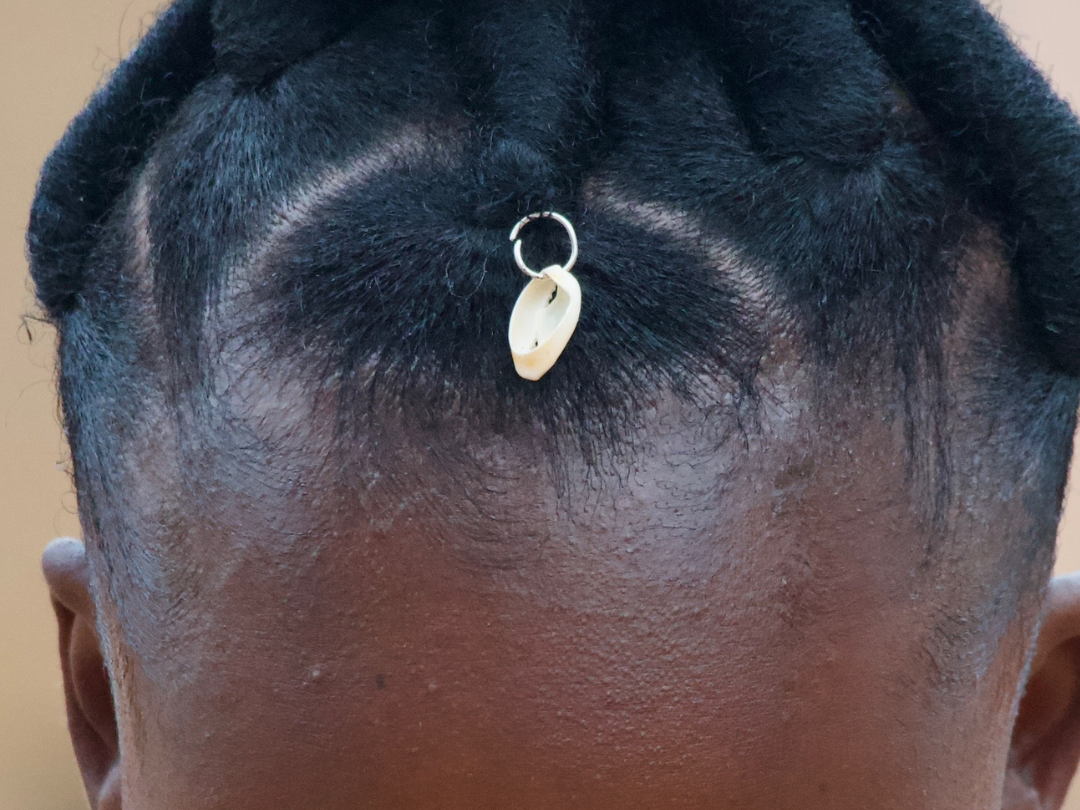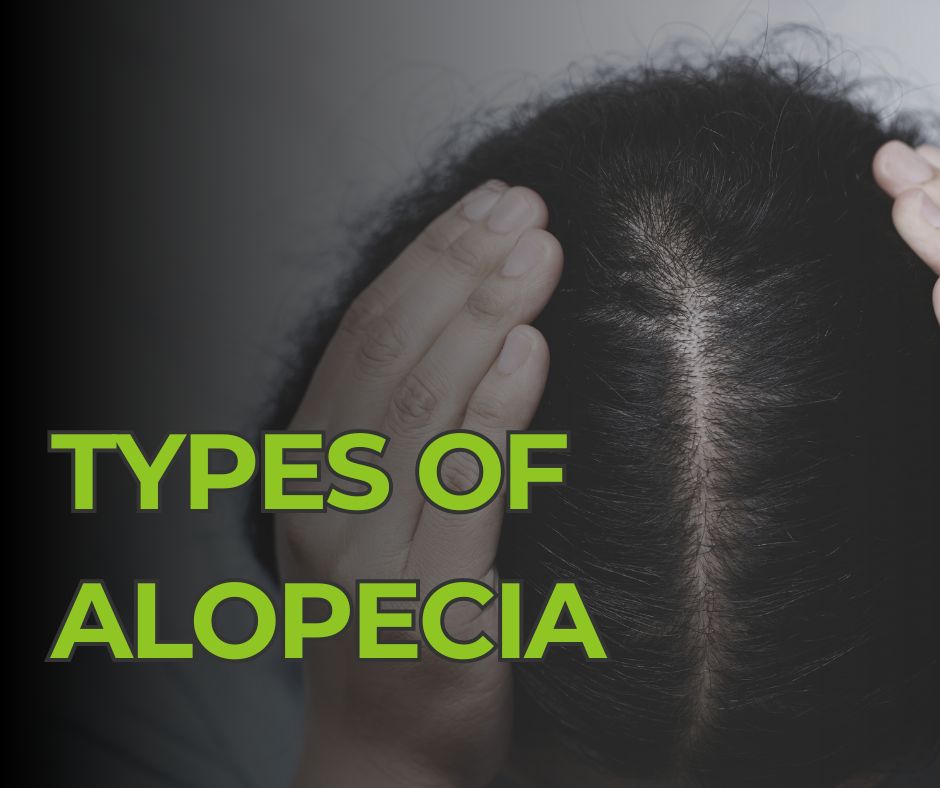Alopecia has gained a lot of buzz on the internet over the past few years with celebrities like Jada Pinkett-Smith, Tyra Banks, Viola Davis and Naomi Campbell finally coming out to share their stories of how Alopecia has affected them.
What Is Alopecia?
Alopecia, commonly known as hair loss, is a common condition that can affect individuals of all ages, genders, and ethnicities and refers to the partial or complete loss of hair from areas of the body where it normally grows. It can affect the scalp, eyebrows, eyelashes, beard, or any other part of the body where hair is present. There are various types of Alopecia, each with its own causes, characteristics, and treatment options. The specific cause, characteristics, and treatment of Alopecia can vary depending on the type and individual circumstances.
Types Of Alopecia
Androgenetic Alopecia (Male Pattern Baldness/Female Pattern Baldness) is a type of Alopecia:
This is the most common type of hair loss, affecting both men and women. It's caused by a combination of genetic and hormonal factors. It is related to the hormone dihydrotestosterone (DHT), which can shrink hair follicles, leading to shorter and finer hair growth cycles.
Symptoms: Androgenic Alopecia typically presents as a gradual thinning of hair, starting at the temples or crown in men and as diffuse thinning all over the scalp in women. It rarely causes scarring of the scalp.
Alopecia Areata is a type of Alopecia:
This is an autoimmune condition where the immune system mistakenly attacks hair follicles, leading to sudden, patchy hair loss on the scalp, face, and other areas of the body. Hair loss in Alopecia Areata is often cyclical, with periods of hair loss followed by spontaneous regrowth. However, the extent and duration of regrowth can vary greatly among individuals.
Symptoms: Sudden hair loss on the scalp, face and other body parts in a patchy pattern.
Alopecia Totalis is a type of Alopecia:
In this condition, all hair on the scalp is lost. It's considered a severe form of Alopecia Areata. Hair loss in Alopecia Totalis typically occurs suddenly and may progress rapidly over a relatively short period. While Alopecia Totalis can be a persistent condition, spontaneous regrowth of hair is possible in some cases. However, the likelihood and extent of regrowth vary among individuals.
Symptoms: Sudden and rapid hair loss specifically on the scalp.
Alopecia Universalis is a type of Alopecia:
This is an advanced form of Alopecia Areata where hair loss extends to all body hair. Hair loss in Alopecia Universalis typically occurs suddenly and may progress rapidly over a relatively short period, similar to Alopecia Totalis. While some individuals with Alopecia Universalis may experience persistent and complete hair loss, others may have periods of spontaneous regrowth followed by recurrent hair loss. The course of the condition can be unpredictable and varies among individuals.
Symptoms: Similar to Alopecia Totalis however, hair loss is all over the body, including eyebrows and eyelashes.
Traction Alopecia is a type of Alopecia:
Traction Alopecia is a type of hair loss caused by repeated or prolonged tension on the hair follicles. This tension can occur due to certain hairstyles or grooming practices that pull on the hair over time. The primary cause of Traction Alopecia is mechanical stress on the hair follicles, rather than an autoimmune or genetic factor. Traction Alopecia typically results in hair loss along the hairline, temples, or other areas where there is repetitive pulling or tension on the hair. The hair loss may be gradual and progressive. In addition to hair loss, Traction Alopecia can also cause changes in hair texture, such as thinning or weakening of the hair shafts. This can result in brittle, fragile hair that is more prone to breakage. In the early stages, Traction Alopecia may be reversible if the underlying cause of tension on the hair follicles is identified and eliminated. However, if the condition persists for an extended period, permanent damage to the hair follicles may occur, leading to irreversible hair loss.
Symptoms: Gradual and progressive hair loss along the hairline and temple.

Telogen Effluvium is a type of Alopecia:
Telogen effluvium is a type of temporary hair loss characterized by a significant shedding of hair, typically occurring a few months after a triggering event such as stress, illness, medication, or hormonal changes. The condition occurs when a large number of hair follicles prematurely enter the telogen (resting) phase of the hair growth cycle, leading to increased shedding of hair during the telogen phase.
Symptoms: Significant shedding of hair, typically occurring a few months after a triggering event.
Anagen Effluvium is a type of Alopecia:
Anagen effluvium is a type of hair loss characterized by the sudden shedding of actively growing hairs during the anagen (growth) phase of the hair growth cycle. Unlike telogen effluvium, which primarily affects hairs in the resting (telogen) phase, anagen effluvium results in the abrupt interruption of hair growth and shedding of immature hairs. The most common cause of anagen effluvium is exposure to toxic substances or therapies that disrupt the rapidly dividing cells in the hair follicles, leading to hair loss. It's often caused by chemotherapy, radiation therapy, or exposure to toxic substances.
Symptoms: Sudden shedding of actively growing hairs during the anagen (growth) phase of the hair growth cycle.
Scarring Alopecia (Cicatricial Alopecia)is a type of Alopecia:
Cicatricial Alopecia, also known as scarring alopecia or scarring hair loss, is a type of hair loss characterized by the destruction of hair follicles and subsequent scarring of the scalp tissue. Unlike other forms of hair loss, where hair follicles remain intact and can potentially regrow hair, Cicatricial Alopecia results in irreversible hair loss due to the replacement of hair follicles with scar tissue.
Symptoms: It often starts at the center of the scalp and spreads outward in a centrifugal pattern.
Are you Suffering From One or More Types of Alopecia?
Have you experienced any of the symptoms mentioned above? Then you may have a form of Alopecia. It's essential to consult with a healthcare professional also known as a Trichologist, for proper diagnosis and management. Treatment options vary depending on the type and cause of Alopecia. To book a consultation with a certified Trichologist, click here and start the journey to a new you.




I have scarring Alopecia, how can I treat it?
Hi Omolara, It really depends on how far it has gotten. Once the hair follicle has reached the point of scarring, there is yet to be a procedure where it can be repaired. We do have a certified trichologist that you can discuss all these things with. https://africanaturalistas.com/hairconsult/links/… This is the link to book an appointment with her.
Let me know if you have any other questions.
CS.
Androgenetic Alopecia is my experience and i am presently using ur ayvrgro powder, conditioner , oil and cream I hope to get some respite